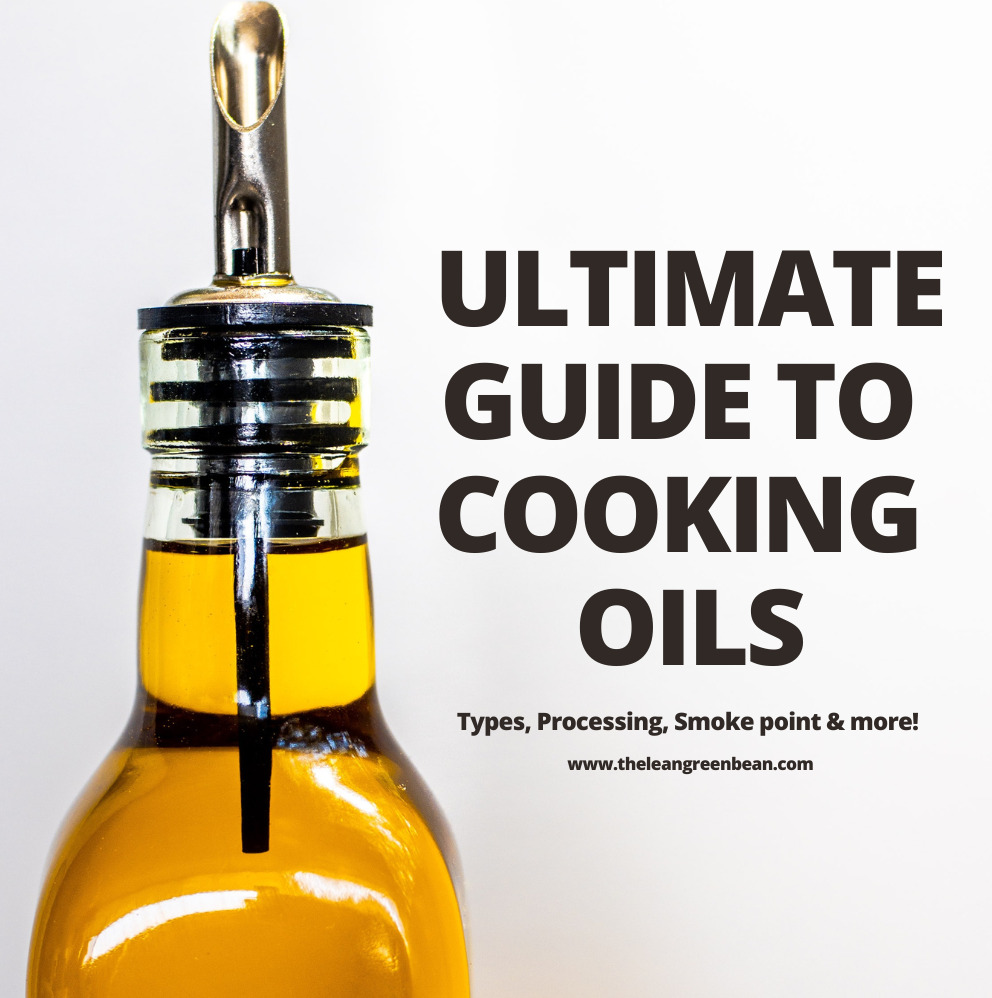
Learn all about some of the most popular cooking oils including how they’re made, what to cook with them, smoke points, and more.

What is Cooking Oil?
Cooking oils are typically made from fruits or plants such as olives, coconuts, avocados, soybeans, sunflowers, or peanuts. They are used to transfer heat in the cooking process which allows foods to be prepared in a variety of ways such as sauteing, roasting, grilling, and frying. In addition, oils add both flavor and nutritional value.
Cooking Oils Are Heart Healthy
Plant oils are often noted for having heart health benefits due to their lower saturated fat content, which can raise LDL “bad” cholesterol. They are typically high in monounsaturated and polyunsaturated fats which are noted for aiding in reducing LDL cholesterol and raising HDL “good” cholesterol.
How Do You Select The Right Cooking Oil?
With so many oil options, here are a few things to consider when choosing an oil:
- Use: Are you sauteing, frying, grilling, roasting or baking? Choose an oil with a higher smoke point for cooking at high temperatures (like avocado oil).
- Flavor: Some oils, like sesame, can have a strong flavor that may not be well suited for your recipe.
- Price: Oils that are less refined, like cold-pressed oils, typically have a higher price point but they also have higher nutrient value.
How are Cooking Oils Made?
Plant oils are processed in a variety of ways and the method used can affect the nutritional quality. The three most common methods are traditional processing, expeller press processing, and cold press processing.
Traditional Processing
Traditional processing consists of refining, bleaching, and deodorizing the oils (also known as RBD).
- Refining uses high heat and synthetic chemicals, such as hexane, to extract the oil from the plant.
- Bleaching the oil then happens when it is passed through a filter using natural clay to remove color pigments.
- Deodorizing occurs last when steam distillation is used on the oils.
Though this is a more traditional and popular process, RBD can destroy some of the oils’ beneficial properties like phytochemicals, polyphenols, and antioxidants. You can assume an oil is produced using the RBD method unless specified other on the package.
Expeller Pressing
Expeller pressing uses a machine to press the oil using friction. This process can heat the oil up to ~200F due to friction but does not use any added chemicals.
Cold-Pressed Oils
Cold-pressed oils are pressed without the production of high heat (below 122F) or the use of added chemicals. The low temperatures protect nutritional contents from being degraded, however, this does lead to a shorter shelf life.
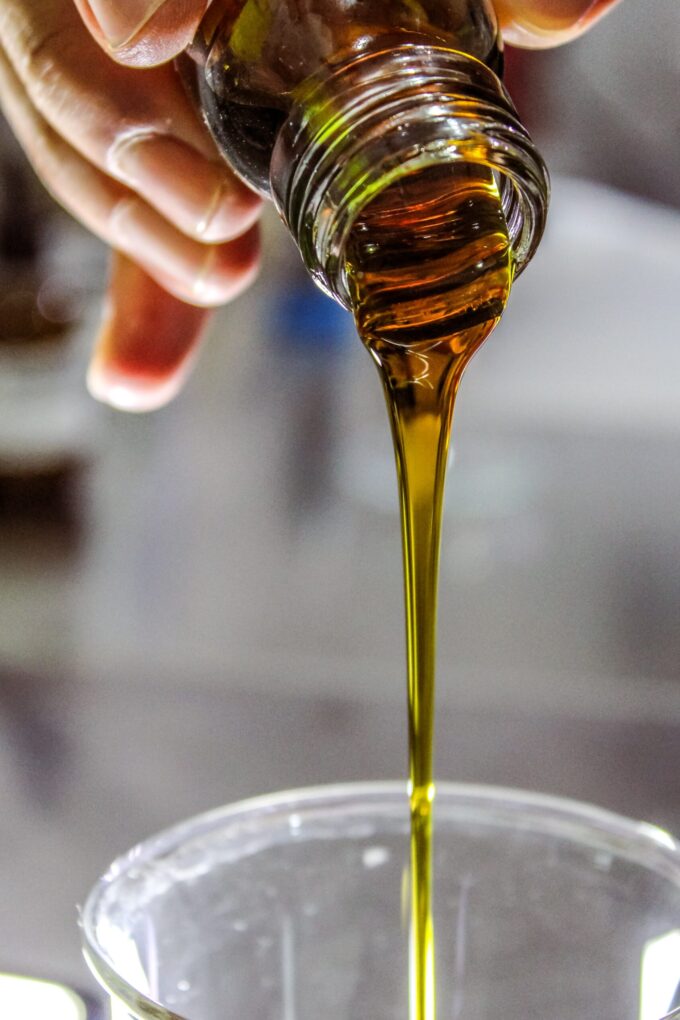
Here are some frequently asked questions about cooking oil:
How long does cooking oil last?
How do you know if cooking oil has gone bad? Be sure to check the expiration date on the bottle especially if it’s been sitting in your pantry for a while. The USDA Food Keep App is also handy when checking for expiration dates once a product has been opened.
Generally, most vegetable oils are for about 12 months in the pantry from the purchase date and anywhere from 3-8 months in the pantry after opening. However, some oils keep much longer than others.
For example, Avocado oil can be stored for up to two years in the pantry if unopened and coconut oil for 3! But how do you know when you opened it? It’s easy to forget how long you have had an item in your pantry, especially cooking oils. I recommend writing the date of opening somewhere on the bottle.
How do I dispose of cooking oil?
When disposing of cooking oil, DO NOT pour it down the sink. This can clog your pipes or worse, cause damage to the sewage system.
The best practice is to dispose of cooking oil in the garbage with other food waste. However, you want to store the cooking oil in a sealed container before throwing it out or make sure it is solid.
But how can you solidify oil? There are actually quite a few ways, such as freezing, adding baking soda or other solid waste products like flour, and even cat litter!
Just don’t throw it out in a plastic bag! This could cause the oil to leak into your trash can, which can cause more problems when you go to take out your garbage.
Is cooking oil flammable?
Cooking oils are generally not combustible unless they reach very high temperatures called a flash point. The flash point is the temperature at which an oil creates flammable vapors which can cause a fire.
The flash point varies depending on the type of oil. But, the best practice to avoid reaching the flash point is by making sure to cook below the smoke point, which is the temperature at which an oil starts to burn.
What is the smoke point of oil?
Plant oils all have different smoke points so the type of cooking you are doing can impact which oil you choose.
When an oil exceeds the smoke point, it begins burning which destroys important nutritional qualities such as phytochemicals and polyphenols. This also means free radicals are released which can be harmful if consumed.
Thankfully, this can be easily avoided by checking the smoke point of the oil before cooking.
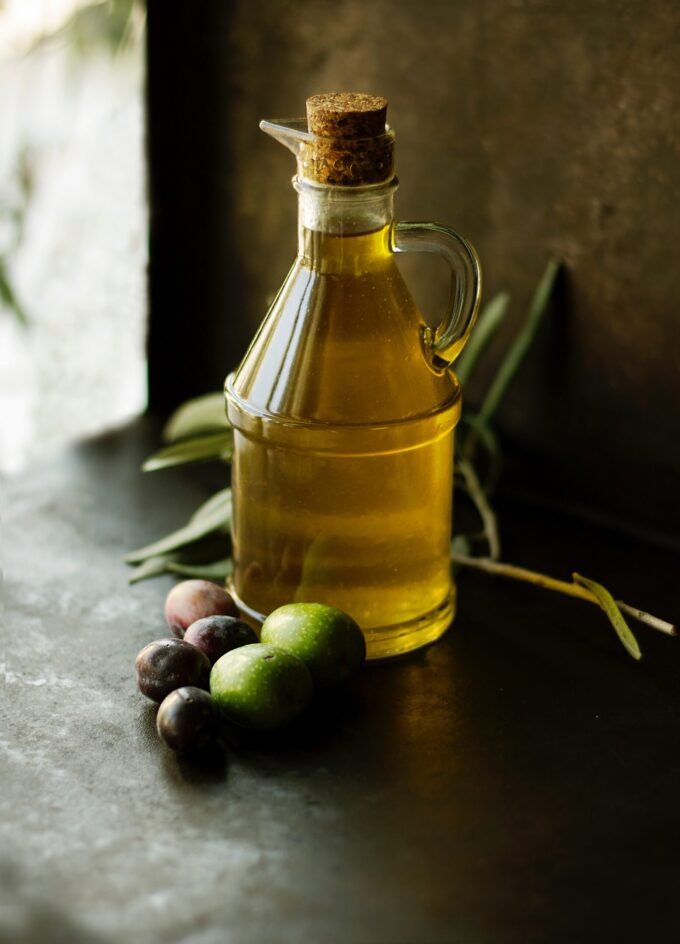
Types of Cooking Oil
Now that we have the basics down, let’s explore some different plant oils. You can find all the recipes on my site that use various types of oils here.
Avocado Oil
My personal favorite for cooking and is often noted for its sweet and pleasant aroma. I buy Marianne’s Avocado Oil and Chosen Foods Avocado Oil Spray at Costco.
Avocado oil comes mostly from the flesh rather than the seed or skin like other plant oils. It is commonly produced in New Zealand, Mexico, and the United States.
It is high in monounsaturated fats and low in saturated fat content (17%). Avocado oil is well known for its high content of oleic acid (similar to olive oil) which can lower blood pressure and reduce the risk of coronary heart disease.
Another benefit of this oil is its high smoke point of 500 F, the highest of any cooking oil, which makes it ideal for all types of cooking like baking, sautéing, pan frying, grilling, and roasting!
Extra virgin avocado oil means the oil has only been extracted from edible-grade avocados and cold-pressed. Be sure to check your label next time you’re in the store!
I use avocado oil in almost all of my baking recipes. If you’re looking for a new muffin or bar recipe to try, check out this roundup of Kid-Friendly Baking Recipes.
Olive Oil
Olive oil is well known for its heart-healthy benefits made popular through the Mediterranean diet. Olive oil comes from the olive fruit grown on olive trees which originated in Asia Minor (present-day Turkey) in 1200 BC!
Olive oil is high in monounsaturated fats and oleic acid which aid in lowering LDL “bad” cholesterol and increasing HDL “good” cholesterol. It also has a slightly lower saturated fat content (14%) than avocado oil.
Olive oil is high in vitamins A, D, E, and K which provide anti-inflammatory and antioxidant properties and is associated with improved blood pressure, insulin sensitivity, glycemic control, and lower risk of cardiovascular disease.
However, not all olive oil is created equal. Extra Virgin Olive Oil or EVOO, contains higher contents of antioxidants. This occurs due to olives being cold pressed 24 to 72 hours after picking.
This process does not use heat or chemical solvents to extract the oil, resulting in higher antioxidant content.
Remember that extra virgin olive oil does have a lower smoke point compared to refined olive oils at 350 F which makes it ideal for sauteing, stir-frying, cooking, or adding to homemade salad dressings.
While refined olive oil has a smoke point of 400 F, it is still important to consider your cooking temperatures when enjoying this heart-healthy oil.
There are tons of brands and varieties of olive oil. Here’s an article sharing the Best Olive Oils For Cooking, Dressings and Everything In Between!
Olive oil would be great in this Easy Chicken Marinade or on this Easy Cucumber Salad.
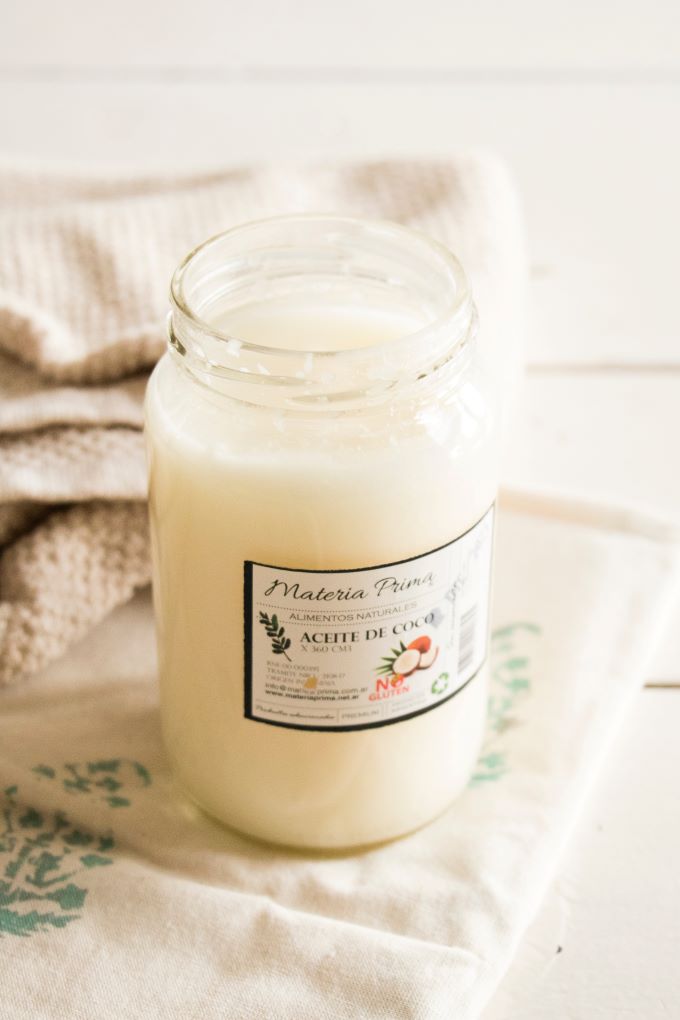
Coconut Oil
Coconut oil is made from coconut meat. It can be fresh meat which is typically called virgin coconut oil or dried coconut meat called “copra”. However, “virgin” and “extra virgin” are not regulated terms for coconut oil, unlike olive oil.
Coconut oil is unique compared to other plant oils due to its high saturated fat content. Coconut oil is 80-90% saturated fat, which is why it is firm or solid at room temperature.
Coconut oil is also primarily made up of Lauric acid which has been shown to increase LDL “bad” cholesterol. While coconut oil is often marketed for its MCT (medium chain triglycerides) oil content, the widely studied MCTs associated with weight loss, are not the same MCTs present in coconut oil.
The bottom line is, coconut oil is very high in saturated fat which is associated with an increased risk of cardiovascular disease and increased LDL cholesterol levels. While there is some emerging research on the possible benefits of coconut oil, many recommend it be consumed sparingly.
When cooking with coconut oil, it is best to use for sauteing, pan frying, stir-frying, or other methods that do not require high heat as its smoke point is 350 F.
Thrive Market has a great brand of coconut oil available. And be sure to check out all of the recipes using coconut oil on my site.
Canola Oil
Canola oil comes from the seeds of the canola plant which is in the same family as vegetables such as cabbage, broccoli, and cauliflower. It is primarily grown in North America, specifically in Canada and the Pacific Northwest.
Canola oil is high in both monounsaturated and polyunsaturated fats with a 7% saturated fat content, the lowest of any plant oil. Canola oil is high in oleic acid, omega-6s (19%), and omega-3s (9%). It also contains plant sterols and tocopherols which have cardio-protective qualities.
Its smoke point is 400 F which makes it ideal for a variety of higher-heat cooking methods.
However, canola oil is typically highly refined and undergoes the RBD processing method to extract the oil. This process can destroy some of the nutritional qualities such as omega-3s.
It is also important to note that canola oil has a high omega-6 to omega-3 ratio. Some research suggests that higher consumption of omega-6s can increase inflammation and oxidative stress which is linked to conditions such as heart disease, obesity, and Alzheimer’s disease.
However, research does support that replacing animal fats such as butter with canola oil does result in lower LDL cholesterol levels.
While canola oil is lower in saturated fat than its other plant oil counterparts, there is still conflicting research on the risks and benefits.
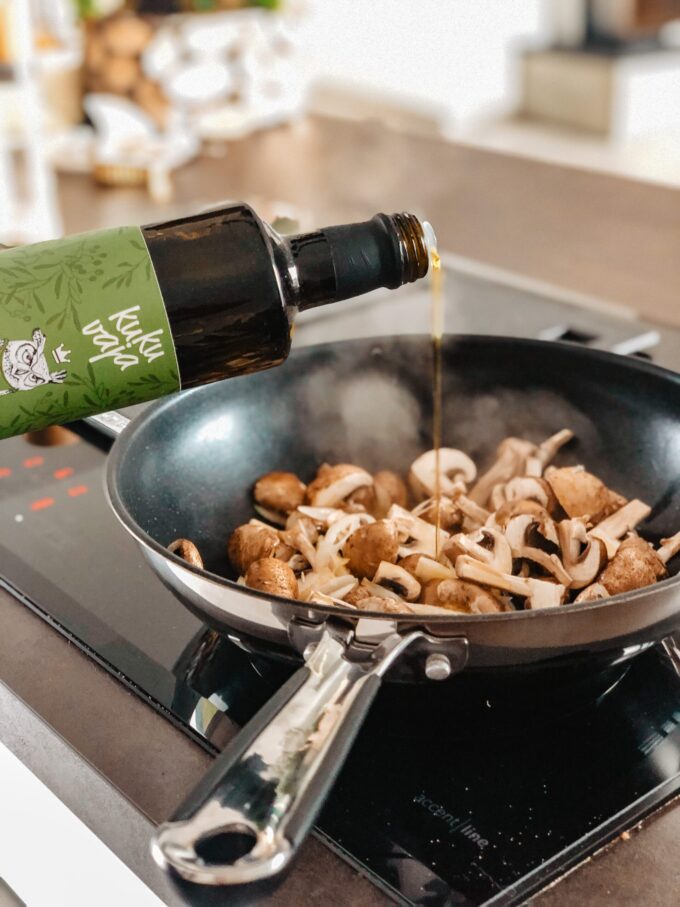
Other Cooking Oils
While we have covered some of the most commonly known and debated plant oils there are many options when it comes to plant oils. Just remember to keep in mind the oil’s smoke point before you add it to your recipe.
Vegetable Oil
One of the most commonly used oils in both cooking and baking is vegetable oil. This is a blend of oils typically soybean and sometimes corn oil. It has a high smoke point of 450 F which makes it versatile for cooking and baking.
While this oil is low in saturated fat and high in polyunsaturated fats. It is high in omega 6s which, like canola oil, can increase inflammation and oxidative stress when consumed in excess.
Nut and Seed Oil
Nut and seed oils are high in monounsaturated and polyunsaturated fats which make them good cooking options. Almond, Hazelnut, Macadamia, Peanut, and Sunflower oil are low in saturated fat and can be used at higher temperatures with a smoke point of 400-450 F.
Other nut and seed oils include flaxseed, walnut, and pumpkin seed which are high in alpha-linolenic acid, a form of omega-3s.
However, these oils have a low smoke point and should be used to drizzle on top of dishes or in homemade salad dressings.
The bottom line – there are lots of different oils out there and you need to decide what’s best for you and your family. In general, most people recommend using oils with high omega 6 concentrations sparingly and trying to choose oils that are expeller or cold pressed when you can reap the most nutritional benefits.
–Lindsay–
For links to resources used in this post, click here.

